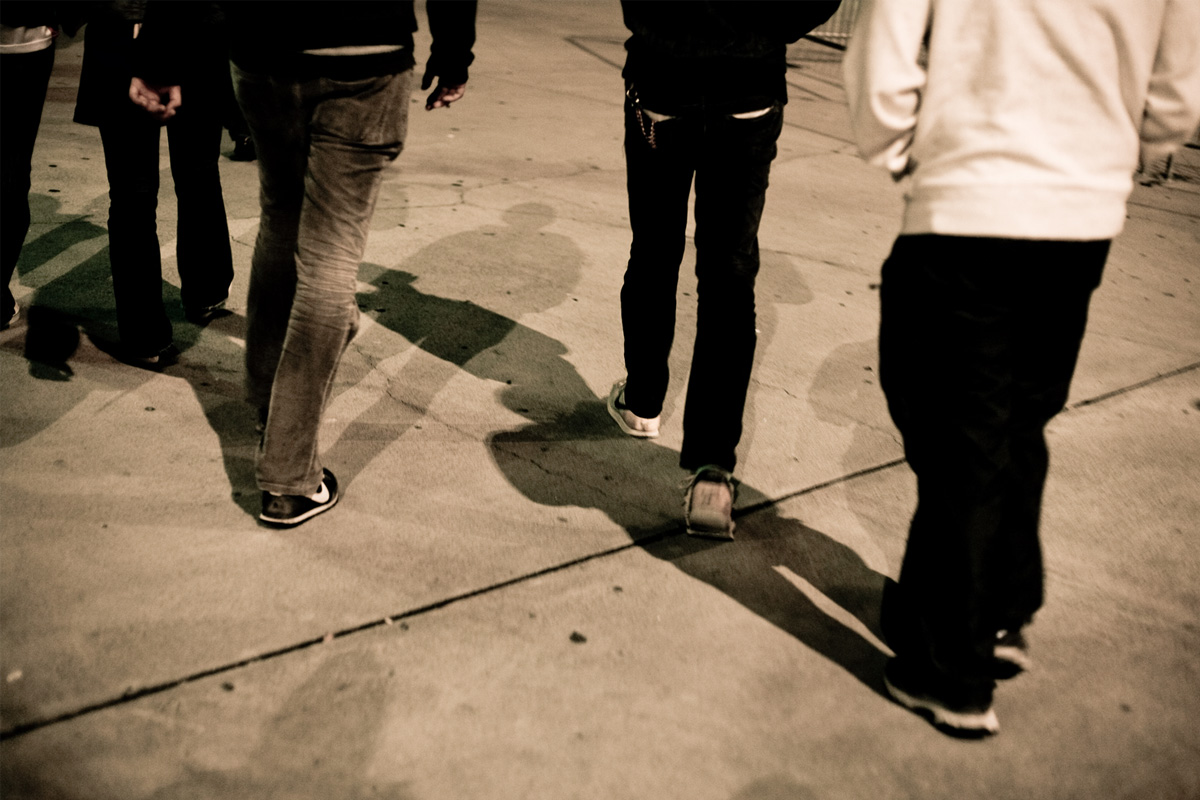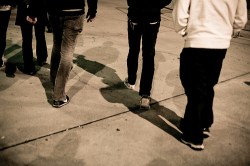Last year, the New York Times put Oakland at No. 5 on its list of “the 45 places to go in 2012,” citing the city’s bars, restaurants, art, and music. The Huffington Post called the city “the coolest new kid in the country.” City officials sent out a press release and made a banner for City Hall celebrating these new honors.
“Oakland is on the rise as a national leader in green building, technology, and international trade. And we’re a nationally acclaimed center for dining, arts, and entertainment,” Mayor Jean Quan said last May, on the occasion of the city’s 160th birthday. “It is why those of us who live here, love our city.”
Notably missing from the city’s PR materials was the fact that Oakland hit No. 5 in another national ranking last year: the FBI’s list of the most violent cities. Oakland saw 131 murders in 2012, a 22 percent increase from the previous year, and a 43 percent rise in burglaries.
While the rest of California is rebounding from the recession, Oakland is struggling with crime, mismanagement, debt, and continued fallout from the mortgage crisis. The city’s police department is under federal monitoring, and millions spent on expensive consultants, most recently former LAPD and NYPD police chief Bill Bratton, have done little to challenge the status quo.
And yet many in Oakland’s growing “creative class” are in denial. Asked to comment about the problems for a recent story in Bloomberg, Doug Leeds, CEO of Ask.com, which moved to Oakland in 2004, was dismissive:
“We certainly read the stories and we see the figures increasing, but on a daily basis, we come to work and we don’t feel the impact of it,” Leeds said. “We don’t see crime tape on the streets, we don’t see chalk outlines of people, there aren’t bullet noises.”
That’s nice for Leeds, but, though he apparently doesn’t see it, Oakland is also in the midst of a housing, education, and employment crisis. It’s going to be hard to solve these problems if the new, well-to-do residents don’t acknowledge they exist, and even contribute to making them worse.
Leeds and other new residents don’t generally feel the impact of crime and other problems because most of the victims are poor people of color in the ’hoods. Meanwhile, the new young tech workers enjoy the bars, restaurants, and galleries, many of them rising up right around Ask.com’s downtown HQ. If the influx hasn’t solved Oakland’s problems, it has at least displaced them to some extent.
But while companies like Ask.com have brought some jobs and downtown revitalization to Oakland, tech workers priced out of San Francisco and real estate speculators helped drive an approximately 20 percent increase in average apartment rental costs for large multi-unit buildings between 2011 and 2012.
The housing shortage is particularly intractable because, for all its talk of being progressive, sustainable, and green, much of Oakland’s established political machine is invested in the status quo. During his stint as mayor of Oakland from 1999-2007, California Gov. Jerry Brown pushed to bring 10,000 new residents — young professionals, mainly — to the downtown area by building new housing and apartments. He met fierce opposition from property owners and preservation advocates who argued that “Manhattan-like” buildings — even four- and five-story ones — would obstruct views and throw shadows.
At a housing conference in Oakland last week, Brown described the scene: “Until I was in local government, I’d never confronted the phenomenon of ‘not in my backyard,’” Brown said. “It’s amazing that people show up at City Hall and protest every single project. They bring in hundreds of people and because City Hall only has a certain capacity, they fill it up. I would marvel at those meetings; they were a micro universe of unreality.”
Brown was building for the creative class, not poor Oaklanders, but the reaction to his new downtown condos may well have screwed everybody. After Brown’s departure, Oakland downzoned large portions of its downtown area and transportation corridors, outlawing just the kind of dense, transit-friendly development that might have helped assuage the housing crisis at a critical time — and the kind of “green building” the mayor champions.
“People mostly agree on the nice things they’d like to see happen to Oakland. But folks aren’t willing to extend enough trust to make it happen,” Oakland planner Chris Kidd told me. “Call it the lingering legacy of Urban Renewal. Nobody has been able to cobble together a comprehensive, positive viewpoint about what infill urbanism can do for Oakland.”
These problems are hardly specific to Oakland. They’re the product of decades of national and state policy and popular neglect. But it’s telling that a city that seems like it should be getting this right — a place dominated by progressive politics and a strong sustainability ethos — is getting it so wrong.
So what is there to do? And where does the responsibility for a city lie? An influx of the creative class doesn’t necessarily create an urban renaissance, but it doesn’t need to be an urban disaster, either.
“These newly arriving creatives and young professionals have a right to be here and an influx of capital in a poor city shouldn’t be spat upon,” says Lukas Brekke-Miesner, program coordinator for the youth development organization Oakland Kids First. “That said, I believe firmly in a brand of citizenship that asks folks to invest in a community, to earn the privileges and freedoms that the community affords. In Oakland, that means helping us transform the devastating effects of violence, poverty, and education, without pushing people out to do so.”
In the wake of a recent murder during a monthly downtown art fair, Brekke-Miesner helped to launch a project called “Respect Our City.” Organizers are selling $10 T-shirts emblazoned with the project’s slogan in glow-in-the-dark ink for prime nighttime visibility. Each sale ensures that a young Oaklander receives a free one if he or she signs a pledge to be peaceful and positive.
“Our goal here is to spread positive messaging that focuses on our collective ownership of this city, and therefore our responsibility to care for it,” says Brekke-Miesner. “These steps are just the beginning of larger efforts we are organizing to bring arts [to poorer neighborhoods] east of the lake, create jobs for youth, and ensure that youth are stakeholders in all these efforts.”
And what could the techies, designers, and academics do to support this work? “If the creative class leveraged their social capital to help us deal with these issues, then I think you could make a strong case for this demographic being the lifeblood of the city,” Brekke-Miesner told me. “As it is, I think much of their potential influence is wasted.”
Perhaps it is idealistic to think that these new refugees from San Francisco and Silicon Valley will take up with the longtime locals and fight for affordable housing, better schools, job training, and living wages. But what’s the alternative? As the recent shooting demonstrates, the creative class can’t paint over these entrenched problems, nor can it wall itself off from the city surrounding it.
True community revitalization for Oakland will be led by those who see the problems, who hear the gunfire, and by those who demand not only a better life for themselves, but for their neighbors, too.





